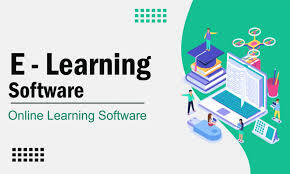The e-learning industry is expected to increase by 900% since 2000 and reach $325 billion by 2024. This is also scarcely shocking. Corporate e-learning uses 90% less energy, takes 40–60% less time, and emits 85% less CO2 per student than conventional classroom instruction. These are all critical factors for firms that care about the environment and want to be efficient.
The e-learning industry is expanding due to breakthroughs and significant changes in the creation, use, and consumption of training materials and growing demand. In light of this, we will examine many significant e-learning software developments that will likely become more prevalent in 2024.
More individualized instruction
Studying at one’s own pace is a significant advantage of online education. Up until now, students have been instructed in the same manner. We anticipate increased customization in e-learning programs by 2024, allowing staff members to customize their educational experiences to meet their unique learning objectives, preferences, and styles.
To enable learners to advance at their own pace, e-learning software development providers will use big data and data analytics to provide personalized learning pathways, course suggestions, and assessment formats. Teachers and assessors can use adaptive technology to monitor students’ progress and provide prompt interventions and assistance to improve learning results.
Machine learning algorithms will also recognize each student’s unique requirements and provide tailored suggestions for instructional material and delivery strategies. This guarantees the information is relevant, suitable, and tailored to each person’s learning preferences.
The use of games
Gamification incorporates game-playing components into other domains, such as e-learning, to inspire users and promote engagement. By including features like leaderboards, point scoring, and peer rivalry, gamification makes learning more enjoyable and gives users an incredible feeling of accomplishment. Research indicates that incorporating gamification into e-learning software might increase dopamine and serotonin levels, leading individuals to link learning with positive emotions.
E-learning software providers might employ assessment scores, completion, and participation rates to increase engagement. They may improve these components in response to user and data-driven input. The language learning app Duolingo, which lets users earn accomplishment badges, create streaks, and move up the league ladder on the scoreboard, is among the most remarkable instances of gamification in e-learning software development.
In 2024, we anticipate seeing additional gamification components that mimic actual events. This will be especially useful for skills-based training, allowing students to apply their newly acquired knowledge in interactive simulations and virtual worlds.
Small-scale education
Microlearning provides learners with brief, readily digestible knowledge in short bursts. Busy professionals with limited time would benefit significantly from bite-sized training. Additionally, they may be eaten while on the road and provided via portable devices (mobile e-learning software).
Young learners’ attention spans are shorter, and microlearning helps them. Generation Z and Millennials choose microlearning over extended programs. Enhancing information transmission and retention is another benefit.
Microlearning providers need to consider how information is delivered and designed. Interactive modules that require active participation, such as fast movies, infographics, podcasts, tests, and anything else that lets the user quickly absorb specific information, might be helpful.
Micro-credentials, short courses that result in certificates, are also popular. They provide certificates for successfully acquiring various competencies and skills. They support validating critical occupational skills and are even accepted by specific colleges as a respectable substitute for degree programs.
Machine learning
While not a novelty, artificial intelligence helps develop e-learning software. According to a 2022 poll, 71% of institutions agreed that AI increases efficiency, and 75% of respondents indicated that AI deployment improved student outcomes.
We anticipate a steady stream of inventions in 2024 that will change the game. AI-driven assessment questions will enable enterprises to create exams faster.
Knowledge assessments are conducted throughout the course to keep students engaged and pinpoint areas where they fall behind.
Predictive analysis uses historical data to identify skill gaps ahead of time, enhancing learning outcomes and allowing firms to focus training efforts there.
AI may also handle a large portion of administration. It may assist with high-level duties like grading assignments, organizing courses, creating learning goals, and giving feedback, as well as manual operations like maintaining permissions and attendance checks. This gives teachers more time to develop curricula and work with students.
Learning on the go
Our “always on” mindset and smartphones and tablets make transitioning to smaller displays for e-learning software unavoidable. Mobile learning adds flexibility to the process and makes it easier for students to fit it around their other obligations. This enables them to access educational programs whenever and from anywhere.
Mobile learning has also increased microlearning accessibility, allowing individuals to consume knowledge in short bursts of five minutes or less. Since 68% of respondents indicate they prefer digital information on smartphones and tablets, mobile learning often takes advantage of the trend toward smaller displays. Additionally, studies show that students who use mobile devices for education finish their courses faster.
Modifications to assessment
Multiple-choice tests are often used to evaluate students’ progress in online courses. Although quizzes may provide a helpful overview, they still need improvement in gauging comprehension levels and highlighting knowledge gaps. By 2024, a broader range of assessment methods will apply to professional training.
Performance-based evaluations are appearing more often. They require students to demonstrate their abilities using augmented and virtual reality to solve “real-world” issues in practice. In addition to assessing practical comprehension, this evaluation highlights soft skills like creativity, problem-solving, and critical thinking.
Additionally, adaptive assessment features will increase as teachers use artificial intelligence to customize exam formats and help students pinpoint areas for development. AI algorithms may also evaluate learners’ performance in real-time and provide immediate feedback to help learners better comprehend their progress.




ivermectina – ivermectin 3 mg without a doctor prescription where can i buy carbamazepine
isotretinoin 40mg drug – order decadron 0,5 mg generic linezolid 600mg cost
order azithromycin 500mg – azithromycin uk purchase bystolic pills
omnacortil 10mg canada – order generic azipro 500mg prometrium 200mg usa
cheap neurontin tablets – order neurontin 800mg pills sporanox 100mg generic
lasix medication – furosemide price cost betnovate
buy doxycycline pills for sale – albuterol 4mg usa buy glipizide 10mg generic
amoxiclav without prescription – order cymbalta 40mg pills purchase duloxetine online
semaglutide 14mg price – cyproheptadine 4mg pill cyproheptadine cost
tizanidine brand – tizanidine usa microzide 25mg price
order sildenafil online cheap – order viagra 50mg generic buy cialis generic
cialis 5mg price – usa pharmacy cialis cheap viagra sale
cenforce drug – buy cenforce 100mg metformin 500mg canada
buy lipitor without prescription – oral amlodipine 10mg buy zestril 10mg online
buy omeprazole 10mg generic – tenormin 100mg price buy atenolol online
buy medrol 4mg – buy generic depo-medrol over the counter triamcinolone 10mg tablet
clarinex 5mg generic – order desloratadine 5mg online buy priligy sale
cytotec buy online – order misoprostol online cheap diltiazem usa
Мы выполняем ремонт любой сложности телевизоров Philips включая профилактику.
Преимущества обращения к нам:
Профессиональная оценка проблемы
Оперативное выполнение работ
Доступные цены
Ремонт с выездом к клиенту при необходимости
Получить подробную информацию или записаться на ремонт вы можете на нашем сайте ремонт телевизоров philips.
Мы восстановим работу вашей техники! Мы готовы помочь – ваша техника будет как новая!
acyclovir online order – order allopurinol 300mg generic order rosuvastatin
domperidone 10mg without prescription – cheap sumycin 250mg cyclobenzaprine over the counter
motilium 10mg ca – order domperidone 10mg online cheap flexeril for sale
cheap propranolol – methotrexate pill buy methotrexate no prescription
Наш сервисный центр Bosch в Москве предоставляет надежный ремонт бытовой техники Bosch любой сложности. Восстанавливаем работоспособность стиральных машин, холодильников, посудомоечных машин, духовых шкафов, кофемашин и другой техники Bosch. Применяем только фирменные комплектующие и передовые методики для надежного восстановления работоспособности вашей техники. Предлагаем выезд мастера на дом или обслуживание в нашей мастерской. Обращайтесь к нам для качественного обслуживания вашей техники Bosch. Заказать замена манжеты стиральной машины bosch и получите качественный сервис.
аристон сервисный центр servis-ariston-moskva.ru